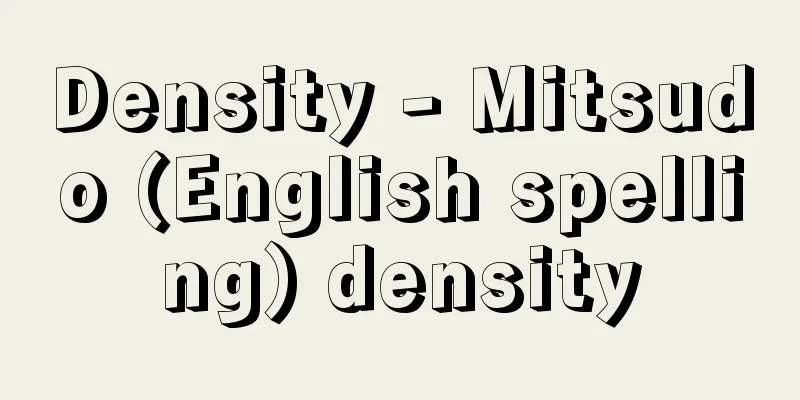Ancestor spirits - Sorei

|
The spirits of family and relatives. They are distinguished from the spirits of the dead, which are the spirits of the dead in general. Among the San hunter-gatherers of Africa, the spirits of the dead are generally feared, but are not distinguished from ancestral spirits. However, among the Kamba, a Bantu ethnic group living in Kenya, they are divided into ancestral spirits of relatives and spirits of the dead whose affiliation is unknown, the former bringing misfortune to descendants who have committed a crime, while the latter curse anyone for no reason. In Christianity and the Kuna Indians of South America, ancestral spirits do not have a direct influence on the living, but in societies that believe that they continue to have a strong relationship with the living, they become ancestor worshippers. In Japan, the spirits of the dead lose their individuality on the 33rd anniversary of their death and merge into the collective ancestral spirits as kami. These ancestral spirits often live in mountains not far from the place of their previous residence and watch over their descendants. The ancestral spirits that have become kami visit the homes of their descendants every year during the Bon Festival and, in the past, during New Year's, to receive food and protect the prosperity of the home. In this way, those who have no home to return to and are not worshiped by their descendants are called unenbutsu. In Japan, it is mainly these abandoned dead spirits, the spirits of those who died violent deaths without fulfilling their human lives, that bring misfortune to the living, in other words, curses. The relationship of ancestral spirits to their descendants can be divided into punitive ones that bring illness and disaster, and protective ones that bring blessings. The latter tendencies are stronger in ancestral spirits in China and Japan, while the former tendencies are stronger in ancestral spirits in African societies. For example, the Talensi, a farming people of West Africa, believe that ancestral spirits will make those who have done something that threatens the order or survival of the kinship group sick, or bring other misfortunes or even death. In such cases, descendants will perform sacrifices to appease the anger of their ancestors. Attempts have been made to explain such differences in the nature of ancestral spirits in terms of the strength of solidarity within the kinship group. When a group is composed of a single principle (for example, the patrilineal principle), solidarity is strong and ancestral spirits' punishment is not necessary. On the other hand, when multiple principles are at work, conflicts are likely to arise, and religious punishment by ancestral spirits is thought to be necessary. [Yasushi Kato] [Reference] |Source: Shogakukan Encyclopedia Nipponica About Encyclopedia Nipponica Information | Legend |
|
家族および親族の祖先の霊。死者一般の霊としての死霊と区別される。アフリカの狩猟採集民サンでは、死霊は一般に恐れられているが祖霊と区別されない。しかしケニアに住むバントゥー系の民族集団カンバでは、親族の祖霊と、所属のわからない死霊とに分けられ、前者は違反を犯した子孫に災厄をもたらすが、後者はだれにでも理由なしに祟(たた)る。キリスト教や南米のクナ・インディアンでは、祖霊は生者に直接の影響を与えることはないが、生者と引き続いて強い関係を持ち続けると考える社会においては祖先崇拝となる。日本では死者の霊は三十三年忌においてその個性を失いカミとして集合的祖霊に合一する。この祖霊は多くの場合生前の居住地からあまり遠くない山にいて子孫を見守る。カミとなった祖霊は毎年盆と、かつては正月にも、子孫の家を訪問しては供応を受け、そして家の繁栄を守護するのである。このように帰るべき家をもたず、子孫に祭られることがないのが無縁仏である。日本で生者に災厄をもたらす、すなわち祟るのはおもにこうした無縁仏、人間としての生を全うせず横死した者の死霊である。 祖霊の子孫に対する関係は、病気や災いをもたらす懲罰的なものと、恩恵を与える保護的なものに分けられる。中国や日本の祖霊は後者の傾向が強く、アフリカの諸社会の祖霊は前者の傾向が強い。たとえば西アフリカの農耕民タレンシでは、祖霊は親族集団の秩序や存続を脅かすような行為を行った者を病気にしたり、その他の不幸やときには死をも与えると信じられている。そうした場合、子孫は供犠(くぎ)を行って祖先の怒りをなだめるのである。このような祖霊の性格の相違を親族集団の連帯性の強弱によって説明しようとする試みがなされている。集団が単一の原理で構成されている場合(たとえば父系原理)、連帯性は強く祖霊の制裁は必要ではない。それに対し複数の原理が働く場合、葛藤(かっとう)が生じやすく、祖霊の宗教的制裁が必要になると考えられるのである。 [加藤 泰] [参照項目] |出典 小学館 日本大百科全書(ニッポニカ)日本大百科全書(ニッポニカ)について 情報 | 凡例 |
>>: Solnhofen fauna - Solnhofen fauna
Recommend
Awata Ryu
Another name for the calligraphy school "Oie-...
Village Headman's Association - What is the mechanism?
In early modern Edo, this refers to the regional g...
machine translation
Machine translation is a method of translating a ...
Fresh soba noodles - Kisoba
...One theory is that the Korean monk Genchin, wh...
Euryops daisy (English spelling)
A semi-cold-hardy evergreen perennial plant of the...
Rheobatrachus silus (English spelling) Rheobatrachussilus
...In species such as the mid-day frog Alytes and...
Purchasing Procedure - Kaiirejunpo
...Both are calculation methods based on the assu...
Sea-blite (English spelling)
…In China, it produces oil that dissolves lacquer...
Ali bin Isa (English spelling) 'Alī b.'Īsā
An ophthalmologist in Baghdad active in the first ...
Dog roundworm - dog roundworm
…A human parasite belonging to the family Coleopt...
accessory fruit
...The false fruits of strawberries and apples cl...
Girikugai - Girikugai
...In particular, in many places, visiting or att...
Adam, W.
…Brothers who were leading British neoclassical a...
Kiyomoto Saibei (first generation)
...Lyrics by Misaya Fumitaka. Music by Kiyomoto S...
Conversational poetry - Kaiwataishi
...The former is a fantasy poem in which the poet...









